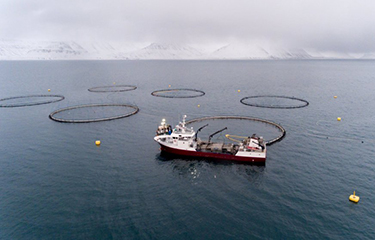Icelandic salmon farmer explores stock market listing

Arnarlax AS has engaged DNB Markets as sole global coordinator in connection with a potential private placement and listing on the Norwegian Stock Exchange's Merkur Market, expected to take place this year.
Following the listing on Merkur Market, Bíldudalur, Iceland-based Arnarlax will continue to consider the potential for a future listing on Oslo Børs or Oslo Axess.
Arnarlax is 59.4 percent owned by Frøya, Norway-headquartered SalMar ASA, and operates through its subsidiary Arnarlax ehf. aquaculture in Iceland. The company currently has licenses with a capacity of 25,200 metric tons (MT) maximum allowed biomass of Atlantic salmon on the west coast of Iceland, and also has applications for an additional 14,500 MT of capacity.
An announcement made by Arnarlax to the stock exchange stated that SalMar is not considering selling any shares in connection with the transaction, and will maintain an ownership of at least 50 percent in the business following the private placement.
According to its current business plan, Arnarlax expects a harvest volume of approximately 12,000 MT of head-on, gutted (HOG) salmon in 2020, 14,000 MT in 2021, and will gradually increase the harvest volume to around 30,000 MT in 2024
Arnarlax harvested just 1,700 MT of salmon in the second quarter of this year, compared with 2,800 MT in the corresponding three months of 2019. Its operating revenues totaled NOK 99 million (USD 10.8 million, EUR 9.1 million) for the quarter, down from NOK 177 million (USD 19.3 million, EUR 16.3 million).
Its performance during the period was characterized by high costs and weak prices, and the quarter’s harvest mainly came from sites that had suffered a high rate of mortality due to winter wounds earlier in the year. The low volume also led to poor capacity utilization at the harvesting plant.
For that quarter, Arnarlax’s operational EBIT represented a loss of NOK 30 million (USD 3.3 million, EUR 2.8 million), down from gains of NOK 56 million (USD 6.1 million, EUR 5.2 million) in Q2 2019.
The sites that had suffered from a high rate of mortality were harvested out, with the third-quarter’s harvested fish to be from sites with a better biological performance and lower level of costs.
Photo courtesy of Arnarlax





Share